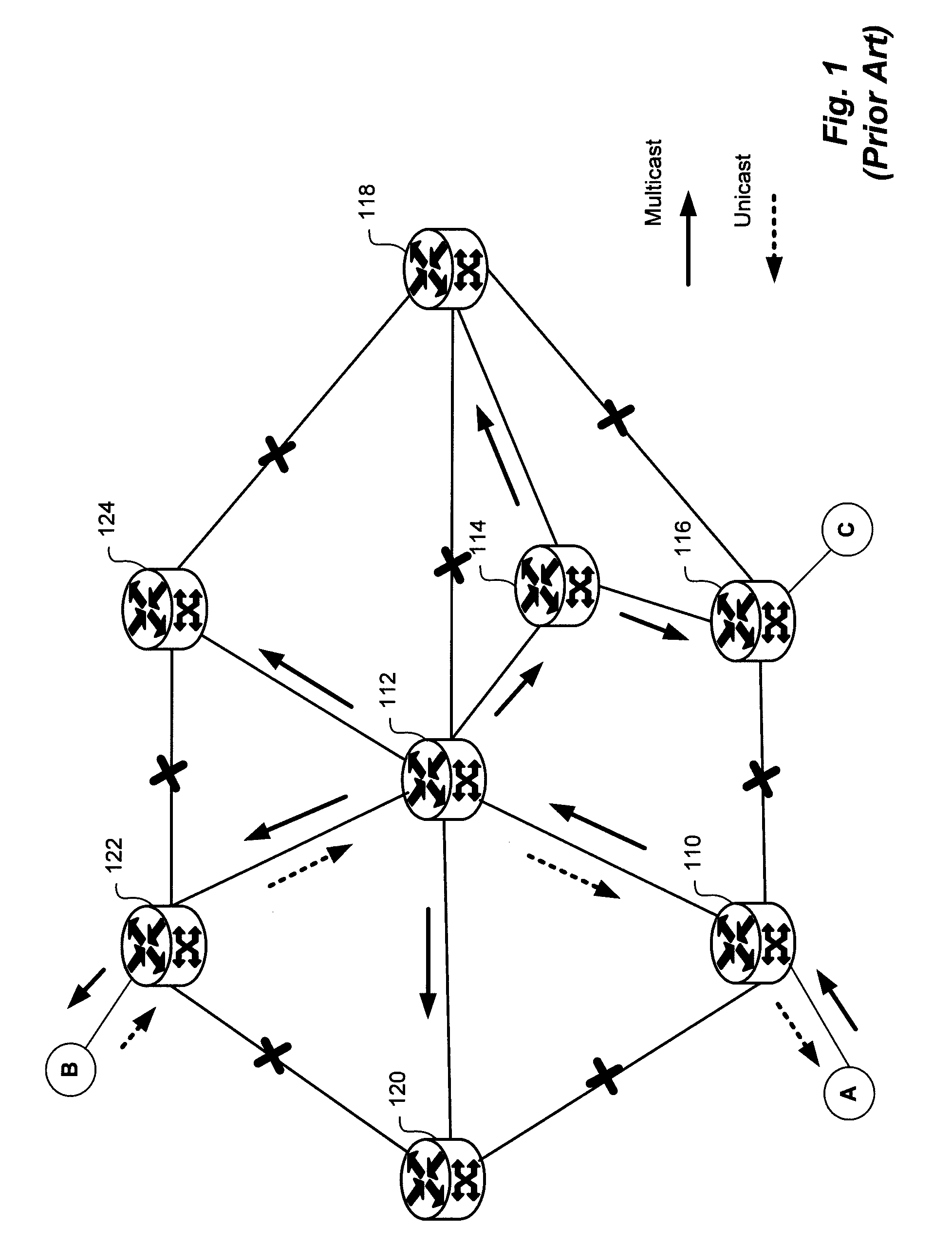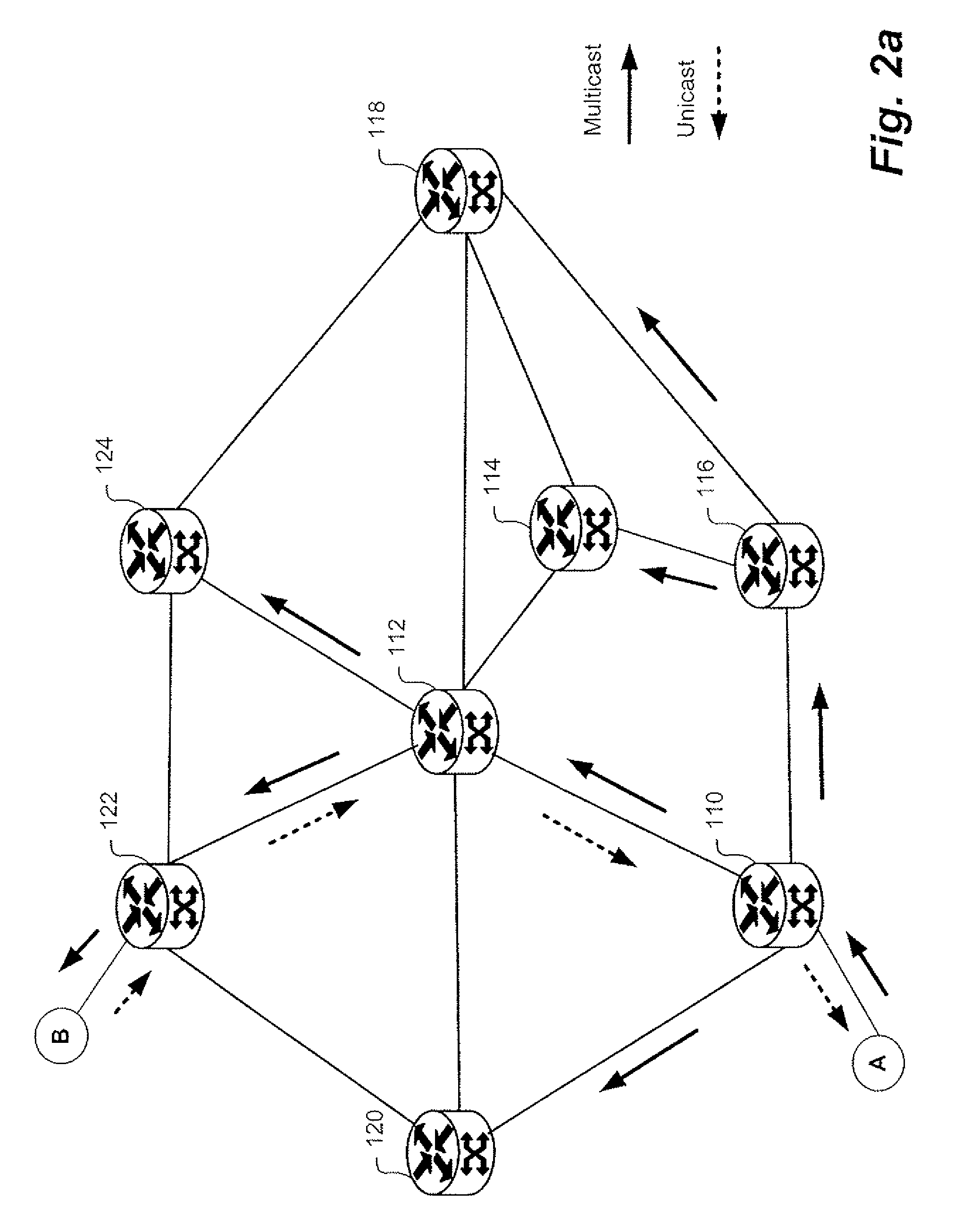Provider link state bridging
a technology of provider link state and routing protocol, applied in the field of Ethernet traffic routing protocols, can solve the problems of network congestion, unusable network capacity, and inability to exploit the breadth of connectivity in the mesh network at any given instant in time, so as to reduce the possibility of unbounded replication, minimize traffic impact, and improve link utilization efficiency
- Summary
- Abstract
- Description
- Claims
- Application Information
AI Technical Summary
Benefits of technology
Problems solved by technology
Method used
Image
Examples
Embodiment Construction
[0033]Embodiments of the present invention are described below, by way of example only, with reference to FIGS. 2-9. The present invention provides a system, method and device for loop-free Ethernet networking.
[0034]Provider Link State Bridging (PLSB) enables Ethernet networks to be scaled from the LAN space to the WAN or provider network space by providing more efficient use of network capacity with loop-free shortest path forwarding. Rather than utilizing a learned network view at each node by using the Spanning Tree Protocol (STP) algorithm combined with transparent bridging, in a PLSB based network the bridges forming the mesh network have a synchronized view of the network topology. This is achieved via the well understood mechanism of a link state routing system. The bridges in the network have a synchronized view of the network topology, have knowledge of the requisite unicast and multicast connectivity, can compute a shortest path connectivity between any pair of bridges in ...
PUM
 Login to View More
Login to View More Abstract
Description
Claims
Application Information
 Login to View More
Login to View More - R&D
- Intellectual Property
- Life Sciences
- Materials
- Tech Scout
- Unparalleled Data Quality
- Higher Quality Content
- 60% Fewer Hallucinations
Browse by: Latest US Patents, China's latest patents, Technical Efficacy Thesaurus, Application Domain, Technology Topic, Popular Technical Reports.
© 2025 PatSnap. All rights reserved.Legal|Privacy policy|Modern Slavery Act Transparency Statement|Sitemap|About US| Contact US: help@patsnap.com



